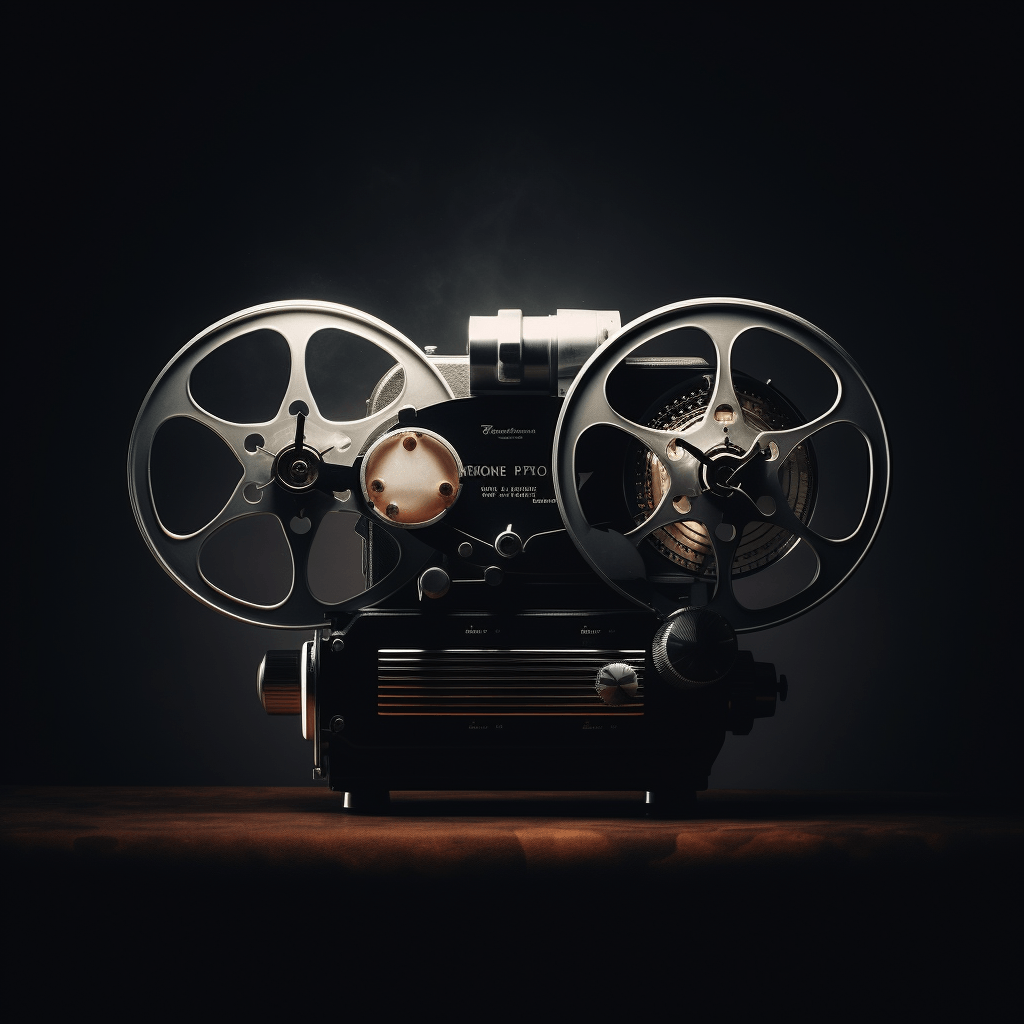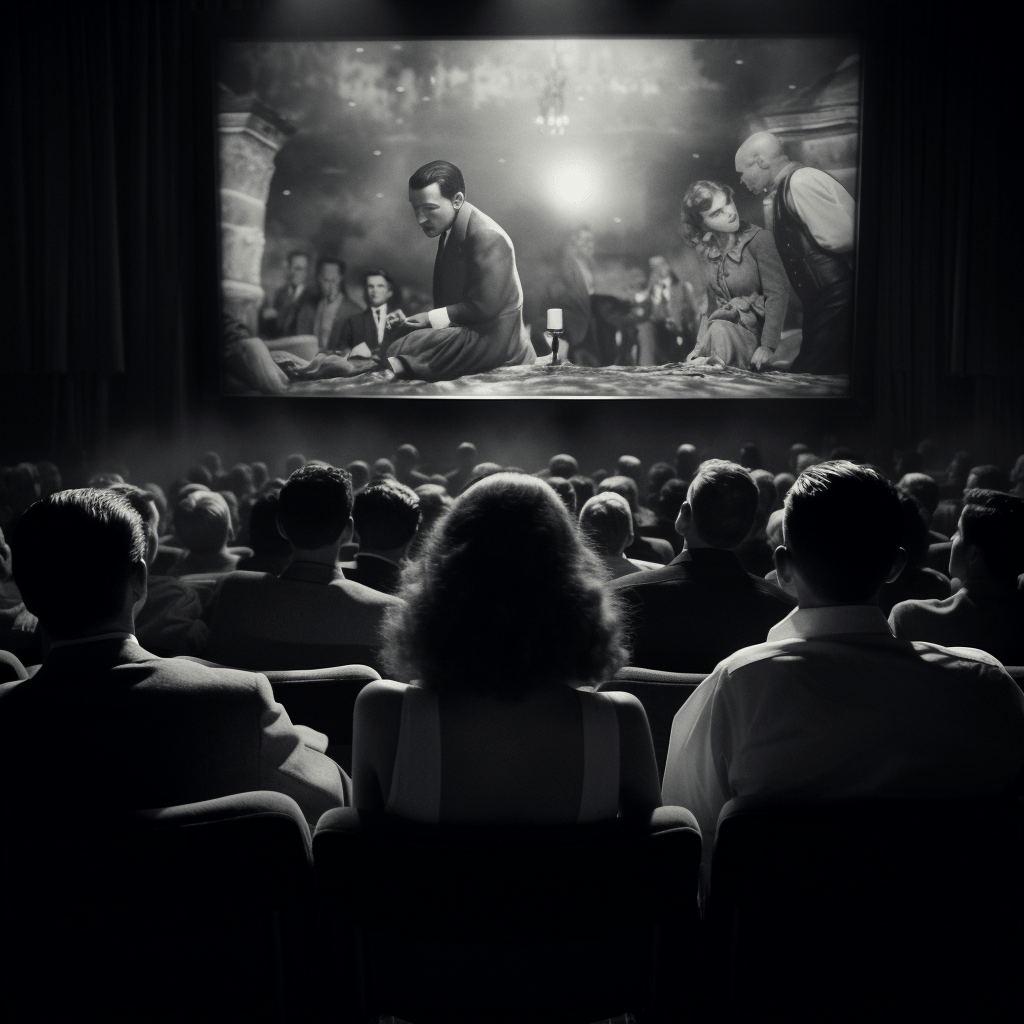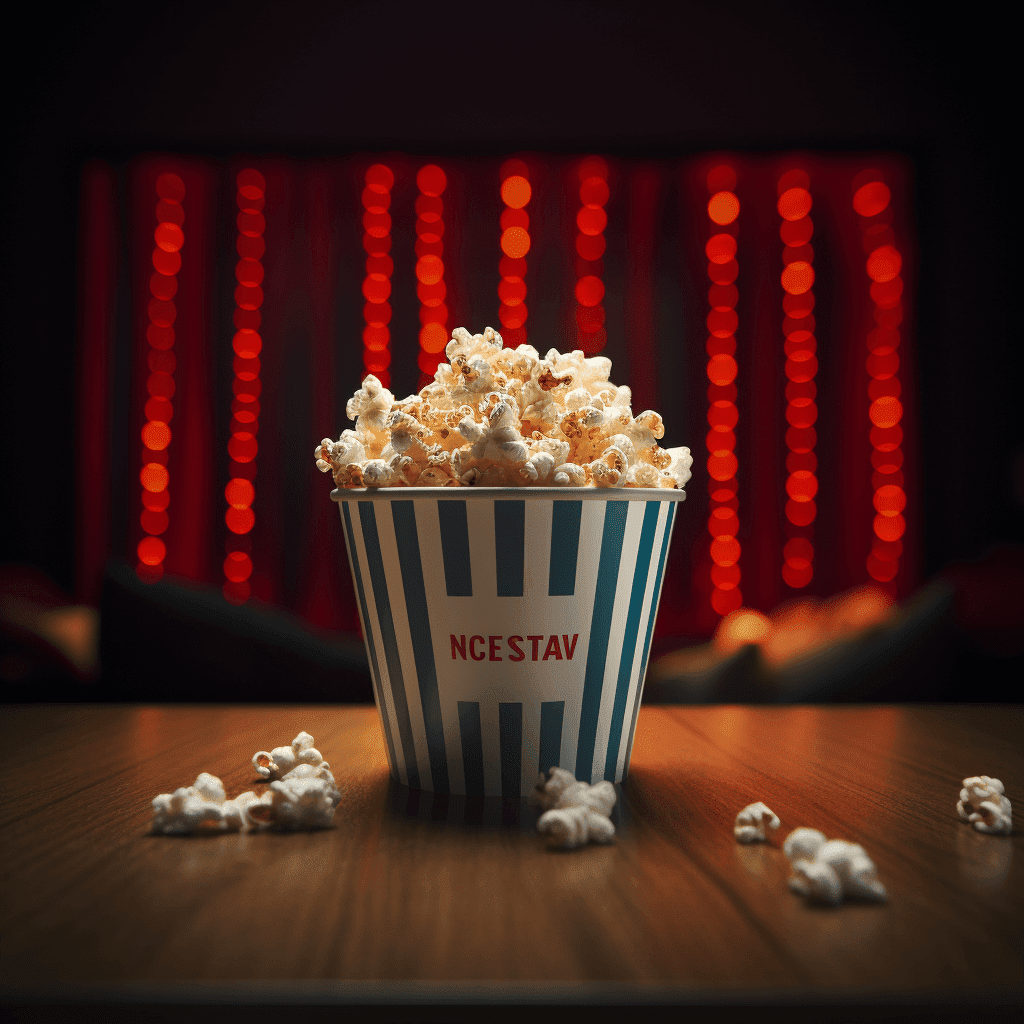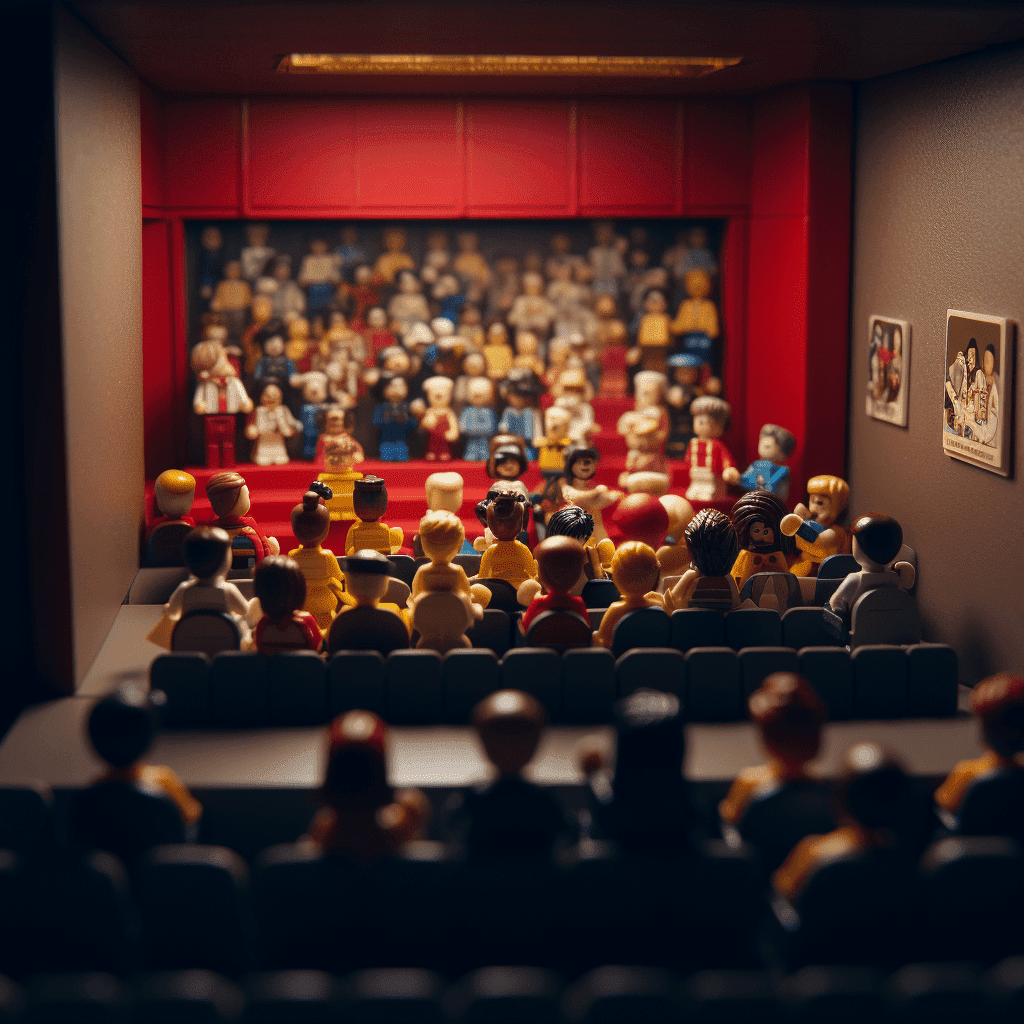Ad Blocker Detected
We use ads to keep this site running, so please consider disabling your ad blocker. Thank you!
Do not know how to disable ad blocker? Check out this article: How to disable ad blocker?
What's After the Blog?
Genres • Cinema
Exploring the World of Experimental Films
Dive into the captivating world of experimental films, exploring groundbreaking techniques and storytelling that challenge and expand the horizons of cinema.
May 15, 2024

Exploring the World of Experimental Films
Introduction
In the vast and varied landscape of cinema, experimental films stand out as a unique and often enigmatic genre. Unlike mainstream movies, which typically follow a standard narrative structure and aim to entertain a broad audience, experimental films challenge conventional norms of storytelling, visual expression, and audience engagement. These films are not just about telling a story; they are about exploring the very medium of film itself. They push the boundaries of what cinema can be and invite viewers to engage with the film in a more active, interpretative manner.
Experimental films often arise from the desire to explore new artistic expressions, question the status quo, and provoke thought. They can be seen as the filmmaker’s playground, a space where directors and artists are free to experiment with visual styles, narrative forms, and thematic content without the constraints of commercial filmmaking. This freedom allows for a wide range of creativity, resulting in films that can be abstract, surreal, avant-garde, or deeply personal.
In exploring the world of experimental films, we delve into a realm where the usual rules of cinema do not apply. Here, the focus is on exploration and experimentation, often leading to works that are as perplexing as they are fascinating. These films might not always be easy to understand or enjoy in the traditional sense, but they offer a unique and invaluable perspective on the art of filmmaking.
Defining Experimental Films
Experimental films, also known as avant-garde or art films, are characterized by their unconventional approach to filmmaking. They often defy traditional narrative structures, opting instead for a more abstract or fragmented storytelling style. These films might eschew linear plots in favor of exploring themes, emotions, or concepts through visual imagery and sound.
One of the hallmarks of experimental cinema is its emphasis on innovation and originality. Filmmakers in this genre are often pioneers in using new techniques, whether it be in cinematography, editing, or narrative. For example, the use of montage, non-linear narratives, or mixed media are common in experimental films. Directors like Stan Brakhage with his hand-painted films or Chris Marker with his photo-roman “La Jetée” have pushed the boundaries of how stories can be told on screen.
Another defining feature of experimental films is their often personal or introspective nature. Many experimental filmmakers use the medium as a way to explore personal themes, question societal norms, or reflect on philosophical concepts. This can result in films that are deeply symbolic or metaphorical, requiring viewers to engage with the film on a more intellectual level. Films like Maya Deren’s “Meshes of the Afternoon” or David Lynch’s “Eraserhead” are examples of this introspective approach, using surreal imagery and unconventional narratives to explore complex themes. Key Characteristics of Experimental Films:
- Unconventional Narrative Structures: Breaking away from traditional storytelling to explore new ways of narrating a story.
- Innovative Visual and Sound Techniques: Experimenting with different ways to use visuals and sound to convey a story or emotion.
- Personal and Introspective Themes: Using film as a medium to explore personal, philosophical, or societal questions.
In summary, experimental films are a vital part of the cinematic landscape, offering a counterpoint to mainstream cinema and enriching the art form with new ideas and perspectives.
”What are some examples of famous experimental films?”
When exploring the realm of experimental cinema, several films stand out for their groundbreaking approach and lasting impact on the genre. These movies have not only challenged traditional filmmaking norms but have also inspired generations of filmmakers to think outside the conventional cinematic box.
One of the most iconic experimental films is “Un Chien Andalou” (Un Chien Andalou), a surreal masterpiece created in 1929 by Salvador Dalí and Luis Buñuel. This short film is renowned for its dream-like sequences and illogical structure, rejecting conventional plot and character development in favor of abstract imagery and a disjointed narrative. It remains a seminal work in the experimental genre for its bold visual style and its ability to evoke powerful emotions without a traditional storyline.
Another groundbreaking work is “Koyaanisqatsi” (Koyaanisqatsi) by Godfrey Reggio, released in 1982. This film is notable for its lack of dialogue and conventional narrative, relying instead on stunning visuals and a haunting score by Philip Glass. “Koyaanisqatsi” offers a meditative reflection on the relationship between humans, nature, and technology, presenting a series of contrasting images that leave a lasting impression on the viewer.
David Lynch’s “Eraserhead” (Eraserhead), released in 1977, is another influential experimental film. Known for its surreal imagery and complex symbolism, “Eraserhead” uses dreamlike sequences and a distinctive sound design to create an unsettling atmosphere. The film’s exploration of themes such as fear, isolation, and the complexities of human relationships has made it a cult classic and a landmark in experimental cinema. Other Notable Experimental Films:
- Meshes of the Afternoon (Meshes of the Afternoon) by Maya Deren: A pioneering work in American avant-garde cinema, known for its dreamlike quality and symbolic imagery.
- Wavelength (Wavelength) by Michael Snow: A minimalist film that explores the concept of perception through a single, continuous zoom shot.
- Dog Star Man (Dog Star Man) by Stan Brakhage: A series of short films that reject traditional narrative structures in favor of a more abstract, visually driven approach.
These films, among many others, showcase the diversity and creativity inherent in experimental cinema, proving that film can be much more than just a means of storytelling – it can be a powerful medium for artistic expression.
The History of Experimental Films
The history of experimental films is as diverse as the genre itself, encompassing a wide range of styles, themes, and filmmaking techniques. Experimental cinema has its roots in the early 20th century, emerging as a response to the mainstream narrative films of the time. Filmmakers in this genre sought to explore the artistic possibilities of the medium, pushing against the boundaries of traditional storytelling and visual representation.
In the 1920s and 1930s, filmmakers like Luis Buñuel, Man Ray, and Salvador Dalí began experimenting with surrealism in film, creating works that defied logical narrative structures in favor of dreamlike imagery and irrational sequences. This period also saw the emergence of abstract films, where filmmakers like Walter Ruttmann and Hans Richter used geometric shapes and rhythmic editing to create visual poetry.
The post-World War II era saw a new wave of experimental filmmakers who continued to challenge conventional cinema. In the United States, artists like Maya Deren and Kenneth Anger explored personal and mystical themes, often blending narrative with abstract elements. The 1960s and 70s witnessed the rise of the structural film movement, with filmmakers like Michael Snow and Hollis Frampton focusing on the material properties of film itself, using long takes, repetitive editing, and minimalistic approaches to challenge viewers’ perceptions. Key Periods in Experimental Film History:
- The 1920s and 1930s: The rise of surrealism and abstract cinema.
- The 1940s and 1950s: A focus on personal and mystical themes, blending narrative with abstraction.
- The 1960s and 1970s: The structural film movement, emphasizing the materiality of film.
Throughout its history, experimental cinema has continually reinvented itself, always seeking new ways to explore the possibilities of film as an art form. From the early avant-garde movements to contemporary experimental works, this genre remains a vital and dynamic part of cinematic history.
Techniques and Styles in Experimental Filmmaking
Experimental filmmakers employ a variety of techniques and styles to create their unique visions, often challenging the audience’s perceptions and expectations. These methods can range from the purely abstract to the deeply personal, and from the minimalistic to the complex and layered. A common thread among these techniques is the intention to explore new ways of seeing and experiencing film as a medium. Non-linear Narratives: One of the most prominent features of experimental films is the use of non-linear narratives. Unlike conventional films, which typically follow a clear, chronological storyline, experimental films often present events out of sequence, use flashbacks or flash-forwards, or may abandon linear time altogether. This technique, seen in films like “Last Year at Marienbad” (Last Year at Marienbad), challenges viewers to piece together the narrative, often resulting in multiple interpretations. Abstract Imagery: Many experimental films use abstract imagery to convey emotions or ideas. This can include the use of symbolic objects, color manipulation, or unconventional camera techniques. Stan Brakhage’s “Mothlight” (Mothlight), for instance, bypasses traditional filming entirely, creating visuals by affixing moth wings and plant matter directly onto film strips, resulting in a mesmerizing, abstract experience. Innovative Sound Design: Sound in experimental cinema is often as important as the visual elements. Filmmakers might use disjointed, asynchronous, or highly stylized soundtracks to create a particular mood or atmosphere. The use of sound in David Lynch’s “Eraserhead” (Eraserhead) is a prime example, where the industrial soundscape adds a layer of surrealism and unease to the film. Mixed Media and Collage: Some experimental films incorporate different forms of media, such as animation, live-action footage, and still photography, to create a collage effect. This technique, employed in films like “Waltz with Bashir” (Waltz with Bashir), blurs the line between reality and imagination, documentary and fiction. Key Experimental Techniques:
- Non-linear Narratives: Challenging traditional storytelling structures.
- Abstract Imagery: Using visuals to convey concepts and emotions beyond the narrative.
- Innovative Sound Design: Crafting soundscapes that complement or contrast with the visual elements.
- Mixed Media and Collage: Combining various forms of media to create a unique visual language.
These techniques demonstrate the vast creative potential of experimental cinema, offering filmmakers a means to push the boundaries of traditional filmmaking and explore new artistic horizons.
”Why do filmmakers create experimental films?”
The motivations behind creating experimental films are as varied as the films themselves. For many filmmakers, experimental cinema is an opportunity to explore artistic ideas that would be impossible within the confines of mainstream filmmaking. It allows them to push the boundaries of the medium, experiment with new techniques, and express their personal vision without commercial constraints. Artistic Expression: At its core, experimental filmmaking is about artistic freedom. Filmmakers in this genre often have a strong personal vision or a desire to explore specific themes and ideas. These films can be a form of self-expression, a way to convey emotions, thoughts, or concepts that are not easily communicated through conventional storytelling. For example, “Meshes of the Afternoon” (Meshes of the Afternoon) by Maya Deren is often interpreted as an exploration of the subconscious and feminine identity. Exploring New Techniques: Experimental films also serve as a testing ground for new filmmaking techniques. Filmmakers use this platform to experiment with visual effects, animation, non-traditional narrative structures, and other innovative techniques. This experimentation can influence mainstream cinema, introducing new styles and methods that enrich the art form. Challenging Viewers’ Perceptions: Another motivation for creating experimental films is to challenge and expand the audience’s understanding of cinema. These films encourage viewers to question and interpret what they see, engaging with the film on a deeper, more intellectual level. This can lead to a more active and participatory form of film viewing, as seen with works like “Wavelength” (Wavelength) by Michael Snow. Reasons Filmmakers Create Experimental Films:
- Artistic Expression: Using film to explore personal themes and artistic ideas.
- Exploring New Techniques: Innovating with filmmaking methods and technologies.
- Challenging Viewers’ Perceptions: Encouraging audiences to engage with cinema in new and thought-provoking ways.
In essence, experimental filmmaking is driven by a desire to explore, innovate, and communicate in ways that go beyond the traditional scope of cinema, offering both filmmakers and audiences new ways to experience and understand the art of film.
Experimental Films and Audience Reception
The reception of experimental films by audiences is often as varied as the films themselves. These works typically attract viewers who are open to non-traditional film experiences and who enjoy interpreting and deriving meaning from abstract storytelling and imagery. However, due to their unconventional nature, experimental films can also be challenging for some viewers, particularly those accustomed to more mainstream, narrative-driven cinema.
The beauty of experimental films lies in their ability to evoke different reactions and interpretations from each viewer. Films like “Enter the Void” (Enter the Void) by Gaspar Noé or “The Holy Mountain” (The Holy Mountain) by Alejandro Jodorowsky are known for their visually stunning yet complex and often bewildering narratives, which can leave audiences pondering long after the film has ended. These films often require an active engagement from viewers, inviting them to participate in the construction of meaning rather than passively consuming a pre-defined story.
Audience reactions to experimental films can range from awe and admiration to confusion and frustration. Some viewers appreciate the opportunity to engage with a film on a deeper, more intellectual level, while others may find the lack of a clear narrative or resolution unsatisfying. This polarization is a testament to the diverse nature of experimental cinema and its capacity to push the boundaries of what is expected and accepted in film. Common Audience Reactions to Experimental Films:
- Intrigue and Curiosity: Attracted by the unique and unconventional approach to filmmaking.
- Confusion and Frustration: Challenged by the lack of traditional narrative structure and clear meaning.
- Deep Engagement and Interpretation: Encouraged to actively interpret and find personal meaning in the film.
Ultimately, the reception of experimental films underscores the subjective nature of cinema and its power to engage viewers in a multitude of ways, challenging their perceptions and expanding their understanding of what film can be.
The Role of Experimental Films in Modern Cinema
Experimental films play a crucial role in the landscape of modern cinema. They serve as a vital counterbalance to mainstream films, offering alternative perspectives and pushing the boundaries of the art form. In many ways, experimental cinema acts as a laboratory for the film industry, where new ideas, techniques, and narrative forms can be explored and developed.
Influence on Mainstream Cinema: While experimental films often operate on the fringes of the film industry, their impact on mainstream cinema is undeniable. Techniques and styles developed in experimental films have often been adopted by mainstream filmmakers, enriching the visual and narrative vocabulary of cinema. Directors like Christopher Nolan with “Memento” (Memento) or Darren Aronofsky with “Requiem for a Dream” (Requiem for a Dream) have incorporated non-linear narratives and innovative visual techniques, reminiscent of experimental cinema, into their films, demonstrating the crossover potential of these ideas.
Inspiration for Filmmakers: Experimental films also serve as a source of inspiration for filmmakers, both amateur and professional. They challenge directors and writers to think creatively and explore new ways of storytelling. For aspiring filmmakers, experimental cinema can be particularly inspiring, as it exemplifies how one can create impactful and meaningful work outside the constraints of commercial filmmaking.
Preservation of Cinematic Diversity: Lastly, experimental films are crucial in preserving the diversity and richness of cinema. They ensure that film remains a dynamic and evolving art form, continually pushing the boundaries and exploring new territories. Experimental cinema reminds us that there are always new stories to tell, new ways to tell them, and new perspectives to explore. The Impact of Experimental Films on Modern Cinema:
- Influencing Mainstream Cinema: Introducing new techniques and narratives to a broader audience.
- Inspiring Creativity in Filmmakers: Encouraging innovation and experimentation in filmmaking.
- Preserving Cinematic Diversity: Ensuring that cinema continues to evolve and expand as an art form.
In conclusion, the role of experimental films in modern cinema is both significant and indispensable. They are a driving force behind the evolution of the art form, challenging, inspiring, and expanding the horizons of filmmakers and audiences alike.
Conclusion
The exploration of experimental films reveals a rich and diverse world where filmmakers break free from the confines of traditional storytelling and visual representation. Experimental cinema is not just a genre; it’s a state of mind that challenges both the creator and the viewer to rethink what film can be. It’s an artistic endeavor that pushes the boundaries of narrative, visuals, and sound, often creating a unique and immersive experience that can be both perplexing and enlightening.
These films encourage us to question our perceptions and open our minds to new possibilities. They remind us that cinema is not just about entertainment; it’s a powerful medium for artistic expression and a mirror reflecting the complexities of human experience. The world of experimental films is a testament to the limitless creativity of filmmakers and their ability to continuously redefine the art of cinema.
As we conclude this journey through the world of experimental films, it’s clear that this genre plays a crucial role in the evolution of cinematic art. It challenges the norms, offers new perspectives, and keeps the spirit of innovation alive in cinema. Whether you’re a seasoned cinephile or a curious newcomer to this genre, experimental films offer a refreshing and thought-provoking departure from the mainstream, inviting you to explore the uncharted territories of film.
Invitation to Explore More
We hope this exploration into the world of experimental films has piqued your interest and expanded your understanding of the diverse landscape of cinema. If you’re intrigued by the endless possibilities of film and eager to discover more, we invite you to delve deeper into our blog at What’s After the Movie.
Join us at ATM as we continue to explore the fascinating world of movies, from the groundbreaking experimental films to the latest blockbuster hits. Our platform offers insights, information, and a comprehensive database that covers all aspects of cinema, including those intriguing end credit scenes. Whether you’re looking for in-depth analyses, movie recommendations, or just curious about what happens after the movie ends, ATM is your ultimate destination for all things cinematic.
Dive into the captivating world of cinema with ATM - your comprehensive guide to all genres of film, from experimental to mainstream. Explore, discover, and enjoy the endless possibilities of movies at What’s After the Movie.
Continue reading

What's After the Movie?
Not sure whether to stay after the credits? Find out!
Check out our other apps:
Actors
Companies
Latest Movies
© 2025 What's After the Movie. All rights reserved.















